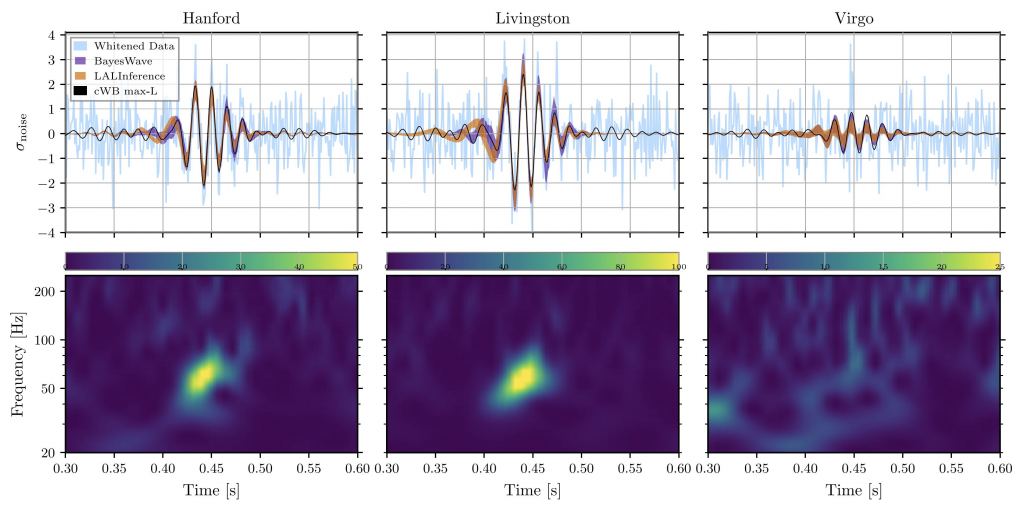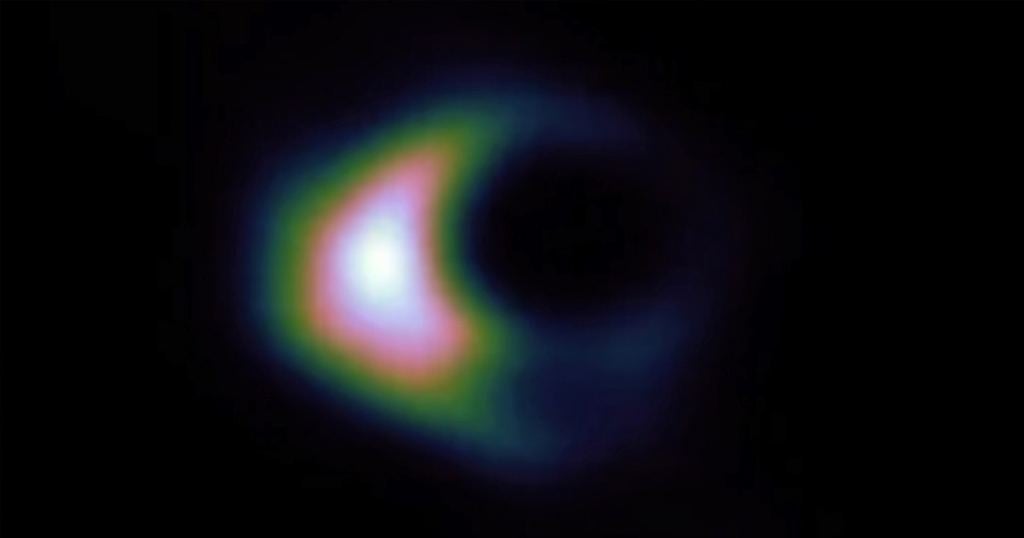In May of 2019, the gravitational wave observatories LIGO and Virgo detected the merger of two black holes. One had a mass of 85 Suns, while the other was 66 solar masses. The event was named GW190521 and was the largest merger yet observed. It produced a 142 solar mass black hole, making it the first gravitational wave observation of an intermediate mass black hole. But the event also raised several questions.
One of the biggest mysteries concerns the masses of the two initial black holes. According to stellar models, black holes formed from the collapse of a large star can't be larger than about 65 solar masses. While the smaller of the two might just be under that limit, the larger is definitely not. So how did the 85 solar mass black hole form?
One idea is that it is the result of smaller mergers. If there a close system of 4 to 6 black holes, they might have merged over time to create a single large black hole. But this cluster would also have to be orbiting the 66 solar mass black hole for it to create the GW190521 merger. There's some evidence that black hole clusters can exist, but whether they can merge quickly enough to explain GW190521 isn't clear. So recently a team proposed a different solution. They propose that the GW190521 wasn't the merger of two black holes, but rather a merger of two Proca stars.
A Proca star, or boson star as it is sometimes known, is a hypothetical object analogous to a white dwarf or neutron star. The building blocks of matter come in two general forms: fermions such as electrons and quarks, and bosons such as gluons and the Higgs. Fermions resist occupying the same quantum state. When gravity tries to squeeze fermions together, they push back through what is known as degeneracy pressure. This pressure is what keeps white dwarfs and neutron stars from collapsing under their weight.
Bosons have no problem occupying the same quantum state. In fact, if you super-cool bosons they can form a single quantum object known as a Bose-Einsten condensate. Because of this, you might think gravity would have no problem collapsing a mass of bosons into a black hole. But it turns out that extremely dense bosons in a strong gravitational field behave in unexpected ways. The physics is pretty complicated, but the end result is that a boson star would reach a similar gravitational standoff as white dwarfs and neutrons stars. Hypothetically, a boson star could be gravitationally stable just like white dwarfs and neutron stars. Even more so. There is a limit to degeneracy pressure, when means that white dwarfs can't be larger than 1.4 solar masses, and neutron stars can be larger than 2 - 3 solar masses. Given the right conditions, a boson star could easily have a mass of 85 Suns or more.
Known boson matter couldn't become a Proca star, but certain theories of dark matter propose new kinds of bosons. If dark matter is made of low-mass bosons, they could form into objects similar in size and mass to black holes. Since they would have strong magnetic fields (unlike black holes) we might be able to distinguish them from black holes by the way light lenses around them. Or, as this latest work proposes, we might be able to detect them by their gravitational waves.
When the team looked at the data from the GW190521 event, they found that it was consistent with both a black hole merger and a Proca star merger. The data matched both models equally well. Since the properties of a Proca star depends upon the mass of the bosons that make it up, they used the GW190521 data to measure the boson mass. The answer they got was extremely tiny. About a trillionth that of the estimated neutrino masses.
None of this proves that Proca stars exist. All the gravitational wave events we've observed are perfectly explained by black hole mergers. But the study presents us with interesting ideas. A new light boson particle could help us explain dark matter, and these dark matter particles could form into boson stars. It's a bizarre idea, but one we can't yet rule out.
Reference: Bustillo, Juan Calderón, et al. " GW190521 as a Merger of Proca Stars: A Potential New Vector Boson of 8.7 × 10?13 eV. " *Physical Review Letters* 126.8 (2021): 081101.
Reference: Brito, Richard, et al. " Proca stars: gravitating Bose–Einstein condensates of massive spin 1 particles. " Physics Letters B 752 (2016): 291-295.
Reference: Olivares, Hector, et al. " How to tell an accreting boson star from a black hole. " *Monthly Notices of the Royal Astronomical Society* 497.1 (2020): 521-535.
 Universe Today
Universe Today


